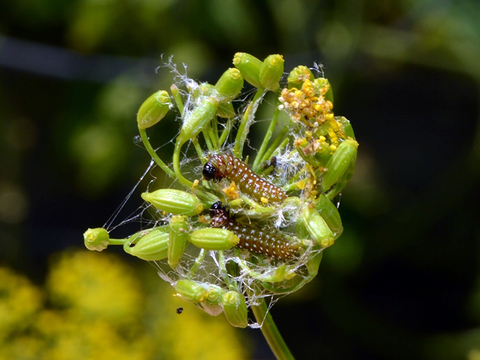There was a flurry of press earlier this month on a new insect being found in Minnesota, purple carrot-seed moth. As this pest can be a problem when saving seeds, let’s take a minute to learn about this insect now that the end of the gardening season is on the horizon.
What makes an insect invasive?
Non-native insects are discovered in Minnesota every year. Some have little impact and just become background noise, while others become huge problems.
For an insect to be considered invasive, it has to check two boxes:
- Not native to Minnesota
- Does economic, environmental, or human health harm
How much will purple carrot-seed moth matter in Minnesota? We will see. Reporting this insect can help us figure that out.
What is purple carrot-seed moth?
Purple carrot-seed moths are small, generic moths native to Europe and Asia. The immature caterpillar life stage feeds on seeds and flowers of plants in the family Apiaceae, which includes herbs and vegetables like carrots, celery, parsley, cilantro, dill and fennel. They were first reported in the U.S. in 2008, and have been found in neighboring Midwestern states in recent years. They were first reported in Minnesota (Washington County) earlier this summer.
The small caterpillars (1/4 inch) feed on flowers. They also may group together a couple of small flowers in silk webbing. The silky clumps of flowers are often more obvious than the caterpillars or feeding themselves.
What kind of damage does purple carrot-seed moth cause?
Remember, this species only feeds on flowers and seeds. This means that your celery stalks or carrot roots are safe. But if you are trying to save seed, either for growing or to make dried spices, carrot-seed moth may cause issues.
How much damage can it cause? It is hard to say. There have not been any reports of major damage in the U.S.
What should I do if I see purple carrot-seed moth?
The Minnesota State Department of Agriculture keeps track of where non-native and invasive species have been spotted. If you suspect that you’ve seen purple carrot-seed moth, report it to the state at Arrest.the.Pest@state.mn.us or 888-545-6684, or use the MDA’s online form.
These insects are easy to squish by hand. The flowers they are on can be easily plucked, and the caterpillars can be killed by placing them in a bucket of soapy water.


